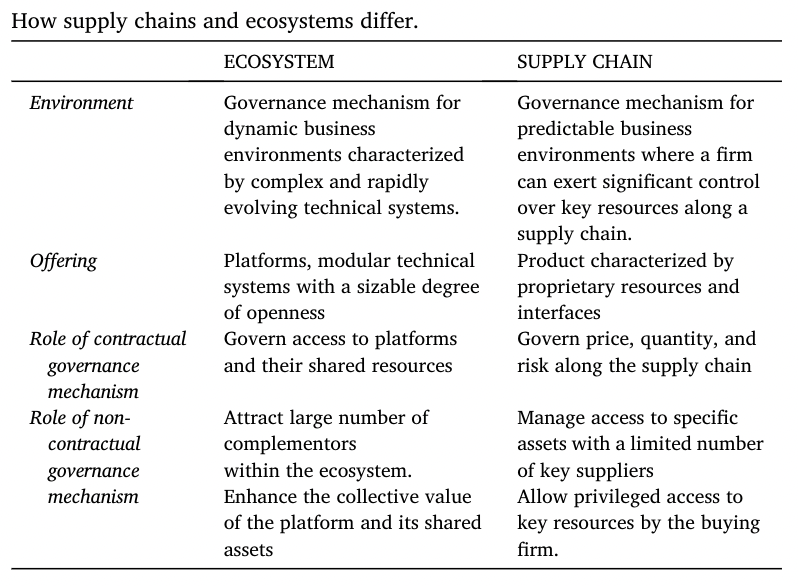In developing (circular) urban value chains, we often discuss developing ecosystems to deal with the systemic questions involving multiple stakeholders in these value chains. How do ecosystems differ from and relate to supply chains? Ecosystems best suit dynamic business environments with complex and evolving technical systems. Recently Hervé Legenvre, Ari-Pekka Hameri, and Ruggero Golini published an article about ecosystems versus supply chains, presenting some interesting ideas that could help build ecosystems and link with supply chain concepts.
Business models and digital transformations
While digital transformations are taking place, we still have a limited understanding of how ecosystems and supply chains differ from a theoretical standpoint and how they relate practically. The researchers studied the evolution of the concept of ecosystems through a systematic review of the literature to describe how the two concepts relate throughout this evolution. They use cases to investigate how ecosystems and supply chains relate practically.
They show that non-contractual governance in a supply chain facilitates investment in specific assets by a few key suppliers. In contrast, non-contractual governance in an ecosystem facilitates the creation of collective shared assets by many ecosystem participants. They also show that practically supply chains and ecosystems can either compete or complement each other and present some conditions for the emergence of such relations.

Findings
Ecosystems best suit dynamic business environments with complex and evolving technical systems. In contrast, supply chains are best suited for environments where firms can exert control on key resources across multiple firms. Ecosystems support platforms built around a modular technical system with a sizable degree of openness, while supply chains support products characterized by proprietary resources and interfaces. Bilateral contracts in a supply chain govern the price, quantities, and risks associated with market transactions, whereas bilateral contracts in an ecosystem govern access conditions to shared resources. Non-contractual governance in supply chains facilitates suppliers’ investment in specific assets. In contrast, non-contractual governance in an ecosystem facilitates the creation of collective shared assets by many participants.
Ecosystems and supply chains can coexist and complement each other within a product lifecycle. An ecosystem can deliver services after a product is sold on the market. This is possible as complementary capabilities provide the means to establish an ecosystem of partners.
